
Q&A Session with ASUS at CES 2016: 10 Years of the Republic of Gamers
As part of our coverage of CES 2016 a few short weeks away, we have teamed up with ASUS for a round-table into their Republic of Gamers (ROG) brand, which is celebrating its 10-year birthday throughout 2016. In the round table, we will be discussing the origins of ROG, with some insight into those first initial products and to how the brand is perceived today, with a few questions from our readers. This is where you come in!
As part of the discussion, we have synchronized a very interesting group of individuals, including all the motherboard senior editors of AnandTech dating back well over a decade:
| Vivian Lien Kralevich Chief Marketing Officer, ASUS USA ASUS Marketing from 2006/2007 |
Gary Key Director of Marketing, ASUS USA AnandTech Motherboard Senior Editor 2005-2008 |
Rajinder 'Raja' Gill Technical PR Manager, ASUS USA AnandTech Motherboard Senior Editor 2008-2010 |
Ian Cutress 10 Years of ROG Round Table Chair Current AnandTech Motherboard Senior Editor from 2011 |
Between Gary, Rajinder and myself, we have covered the Republic of Gamers brand from its inception, with both Gary and Raja now involved in various levels with members of the team that designs, develops, tests and pushes the ROG ecosystem, then managing the perception of it as part of the ASUS brand within North America. At the time when Gary was probing the original models, Vivian was one of his direct ASUS contacts, ensuring that direct line of communication and filling him in on the details. Then when Gary joined ASUS, Raja had Gary as his main contact, and so on, meaning that for this discussion we have the ASUS-AnandTech contact line right from the initial ROG launch.
You may remember we interviewed Dr Albert Chang, Senior Division Director of ASUS Motherboard Business Unit Research and Development back in 2014 about the general path for motherboard design, and how the ROG team is designed to be that skunkworks element of engineering. Raja assists ROG’s internal impromptu extreme overclocking events with top overclockers as well as community management, so we will pick his brains on how design ideas from the forums and events assist product design. With any luck, we will also have some old ROG boxes or hardware on hand through to the newest Maximus line.
This round-table and Q&A session will be video recorded then uploaded after CES, and we invite questions from you. Please leave them in the comments below!
Read More ...
Price Check: DDR4 Memory Down Nearly 40% in 6 Months, Expected To Continue
Today we're launching a new feature on the AnandTech Pipeline: Price Check. Here we'll periodically examine hardware prices and analyze what's behind recent price changes.
Just a year ago DDR4 dynamic random access memory (DRAM) was rather expensive and was sold at a noticeable premium compared to DDR3. Today, DDR4 memory modules cost less than DDR3 modules cost a year ago and continue to get more affordable. Next year prices of DDR4 are expected to decline further as manufacturers of DRAM are gradually increasing production of memory in general and DDR4 in particular.
DDR4 Gets Cheaper as Price Premium Over DDR3 Erodes
The average spot price of one 4Gb DDR4 memory chip rated to run at 2133MHz was $2.221 at press time, according to DRAMeXchange, one of the world’s top DRAM and NAND market trackers based in Taipei, Taiwan. Spot price of a similar memory integrated circuit (IC) was $2.719 in late September and $3.618 in late June, 2015. As it turns out, the price of a single 4Gb DDR4 DRAM IC dropped 38.62% in about half of a year.
Spot prices of DDR3 memory are also declining. One 4Gb DDR3 chip rated to operate at 1600MHz cost $1.878 in Taiwan at press time. A similar chip was priced at $2.658 in late June, which means that the spot price of a 4Gb DDR3 IC dropped 29.4% in less than six months.
The difference between a 4Gb DDR3 memory chip and a 4Gb DDR4 DRAM IC used to be approximately 26.5% in June. Today, a 4Gb DDR4 chip costs about 18.5% more than a 4Gb DDR3 memory IC.
Spot prices of DRAM chips directly affect prices of actual memory modules. At present one 4GB DDR4 SO-DIMM costs $18 in Taiwan, according to DRAMeXchange. A DDR3 4GB SO-DIMM is priced at $16.75. For many PC configurations, price difference between DDR3 and DDR4 memory modules is already negligible. Next year it will erode further and the new type of memory will replace DDR3 as the mainstream DRAM for personal computers and servers.
Retail Prices of DDR4 Modules Drop by Over 50% This Year
While spot and contract prices give a good idea about ongoing trends and help to understand the market in general, they do not reveal the retail situation, something that is important for the end user. As it appears, some DDR4 memory kits became over 50% cheaper this year.
Kingston’s HyperX Fury Black 16GB kit (2*8GB) rated to operate at 2133MHz with CL14 latency used to cost $229.20 in March at Amazon.com, according to CamelCamelCamel. Today, the dual-channel kit costs $108.99. Kingston’s HyperX memory modules are relatively affordable solutions for PC enthusiasts, which are used by system integrators too.
G.Skill’s latest Ripjaws V family of memory modules started to show up in retail only in October or November, but they have already got more affordable. Based on checks from CamelCamelCamel, the G.Skill Ripjaws V DDR4 16GB dual-channel kit rated to operate at 3200MHz used to cost $176.64 in early November, but the product is available today for $136.59.
Memory modules for high-end desktop systems tend to get cheaper faster and more significantly than solutions for mainstream PCs. Corsair’s Dominator Platinum 64GB DDR4 quad-channel kit capable of operating at 2666MHz with CL15 latency used to cost up to $1759.99 at Amazon.com early in 2015. By the middle of the year the price of the kit declined to around $1000 and currently the set of four premium 16GB DDR4 memory modules is available for $679.99.
Since the Dominator Platinum series is designed for ultra-high-end systems, it is not surprising that they are generally overpriced. Nonetheless, even such DDR4 memory solutions get more affordable these days.
Supply Exceeds Demand
There are two key reasons why computer memory is getting more affordable. Firstly, demand for DRAM is not high these days. Secondly, makers of memory chips are transiting to thinner process technologies, effectively increasing their output. Since supply exceeds demand, prices are getting lower.
Sales of personal computers as well as tablets dropped this year, which decreased demand for DRAM by the industry. According to International Data Corp. (IDC), shipments of PCs in the third quarter of 2015 totaled 71 million units, a 10.8% decline from the same period a year ago, but a 7.4% increase from the second quarter of 2015. Sales of tablets in Q3 2015 reached 48.7 million units, which is 12.6% less than in Q3 2014, but 8.94% more than in Q2 2015. By contrast, the industry shipped 355.2 million smartphones in the third quarter, up 6.8% year-over-year and 5.3% sequentially.
The vast majority of personal computers and many tablets use commodity DDR3 or DDR4 memory, whereas contemporary smartphones use LPDDR3 or LPDDR4 memory. Typically, when demand for PCs and commodity DRAM drops, memory makers start to increase output of more expensive server DRAM as well as LPDDR memory to offset revenue declines. According to DRAMeXchange, 40% of global DRAM bit output was LPDDR in Q3 2015.
Modest growth of smartphone sales amid declines of PCs and tablets in the third quarter barely helped DRAM makers to maintain their revenue at approximately the same level as in the second quarter. Global DRAM revenue in Q3 2015 totaled $11.298 billion, down 1.2% from Q2 2015, DRAMeXchange found.
DRAM Prices to Keep Declining
While there are only three major makers of DRAM left on the planet, they continue to fight for market share and profits. In a bid to cut-down costs, manufacturers of memory have to adopt thinner process technologies, which decreases sizes of memory cells and thus increases bit output per wafer. As a result, global supply of DRAM upsurges and affects prices.
This year Samsung Electronics continued its transition to 20nm DRAM manufacturing technology, whereas its rivals — Micron Technology and SK Hynix — only started to use their 20nm and 21nm fabrication processes. The thinner production technology helped Samsung to increase its profit margins and market share. The company controlled 46.7% of the DRAM market in Q3 2015, up from 45.1% in the second quarter. SK Hynix and Micron commanded 28% and 19.2% of the memory market, respectively, according to the market tracker.
Analysts from DRAMeXchange believe that transition to 20nm/21nm manufacturing technologies, slow economy and weak demand for electronics will negatively affect prices of DRAM going forward as supply will exceed demand. To stay profitable, DRAM makers will have to migrate to thinner fabrication processes faster and balance their product mixes.
“Looking ahead to next year’s DRAM market, the annual demand and supply bit growth rates are projected around 23% and 25% respectively,” said to Avril Wu, research director of DRAMeXchange. “Supply will still outpace demand by bit and average sales prices will continue to drop. Whether suppliers can turn a profit will mainly depend on their progression in technology migration and product-mix strategies.”
One good news for DRAM makers is that 20nm and 21nm process technologies help to reduce costs of DDR4 ICs in general and 8Gb DDR4 memory chips in particular. Such DRAM ICs are required to build high-capacity — 32GB, 64GB, 128GB — memory modules. Such products are sold at a considerable premium to server makers, which helps to bolster revenue and profits of memory producers.
Read More ...
Windows 10 Mobile Update For Older Lumias Pushed To 2016
Earlier this year Microsoft stated that their plan was to begin the roll out of Windows 10 Mobile to existing Lumia devices in December. With December being half over by this point, the fact that the update would probably be pushed to 2016 was something of an unofficial but accepted truth. Today Microsoft has made that truly official. The company said the following in a statement to ZDNet:
"This
November we introduced Windows 10 to phones including brand new
features such as Continuum and Universal Windows Apps with the
introduction of the Lumia 950 and 950 XL. The Windows 10 Mobile upgrade
will begin rolling out early next year to select existing Windows 8 and
8.1 phones."
It's not made explicitly clear why the update has been delayed, as the OS is already available on Microsoft's recently launched Lumia 950 and 950 XL. From my experience with the beta/developer releases of the OS that Microsoft has made available, it's entirely possible that they still need to work on ironing out bugs and improving performance. Many reviews of the new Lumia phones have a similar sentiment, and with many of the older Lumia devices running less capable hardware from Qualcomm's Snapdragon 400 series than the 950 and 950 XL, it wouldn't be such a bad thing to have the update delayed to ensure it doesn't cripple performance on those phones.
At this time it's also not known how many devices will receive the update to Windows 10 Mobile. Microsoft has stated that phones will need 8GB of NAND, but it's not clear if there are other hardware requirements. Given that the Lumia 550 just launched with Snapdragon 210 and runs Windows 10 Mobile, I would hope that Microsoft plans to update a significant number of existing devices.
Read More ...
Seagate: Hard Disk Drives Set to Stay Relevant for 20 Years
The very first hard disk drives (HDDs) were demonstrated by IBM back in 1956 and by the early 1980s they became the dominant storage technology for all types of computers. Some say, hard drives are no longer relevant as solid-state drives offer higher performance. According to Seagate Technology, HDDs will remain in the market for at least 15 to 20 years. In a bid to remain the primary bulk storage device for both clients and servers, hard drives will adopt a multitude of technologies in the coming decade.
“I believe HDDs will be along around for at least 15 years to 20 years,” said David Morton, chief financial officer of Seagate, at the Nasdaq 33rd Investor Program Conference.
Sales of HDDs Decrease, But Technology Keeps Evolving
Sales of hard disk drives have been decreasing for several years now. Total available market of HDDs dropped to 118 million units in the third quarter of 2015, according to estimates by Seagate Technology and Western Digital Corp. By contrast, various makers of hard drives sold approximately 164 million units in Q3 2010, the two leading manufacturers claim.
Shipments of HDDs decrease due to a variety of factors nowadays, including growing popularity of solid-state drives (SSDs), drop of PC sales, increasing usage of cloud storage and so on. Nonetheless, HDDs remain the most popular data storage technology, which is also the cheapest in terms of per-gigabyte costs. While SSDs are generally getting more affordable, high-capacity solid-state drives are not going to become as inexpensive as hard drives any time soon. As a result, HDDs will remain a key bulk storage technology for a long time.
To stay relevant in the long term, hard disk drives need to keep increasing their capacity. Last year ASTC (Advanced Storage Technology Consortium), an international organization that unites various companies who develop, manufacture or use hard disk drives, unveiled its vision of the HDD future. According to this technology roadmap, capacity of hard drives will rise to 100TB by 2025. In the coming years HDDs will adopt many new writing technologies in a bid to bolster their data storage capacities.
PMR, SMR and Helium
Modern hard disk drives are based on perpendicular magnetic recording (PMR) and shingled magnetic recording (SMR) technologies. PMR-based drives have been around for about a decade and will remain popular for years to come thanks to their relatively high sequential performance, low cost per gigabyte, and well-understood reliability.
HDDs that use shingled recording write new tracks that overlap part of the previously written magnetic tracks. The overlapping tracks may slowdown writing because the architecture requires HDDs to rewrite adjacent tracks after any writing operation. While SMR allows increasing areal density of hard drives to 1.1 Tbit per square inch or even higher, performance of such HDDs may be lower compared to performance of PMR-based devices. In a bid to “conceal” peculiarities of SMR, which can slowdown performance, makers of HDDs develop special firmware or even alter software applications that use such hard drives in datacenters.
To boost capacities of PMR and SMR hard disk drives today without increasing areal densities, HDD makers need to install more platters into their devices. While it is possible to fit six disks into a standard 3.5” HDD thanks to new technologies, more platters require major redesigns and use of helium inside the drives. The density of helium is one-seventh that of air, which reduces drag force acting on the spinning disk stack and lowers fluid flow forces affecting the platters and the heads. The lower density of helium allows to fit up to seven disks into one drive today, reduce power consumption of HDD motors and improve accuracy of arm’s positioning, something that is important for high bit densities too. Unfortunately, hermetically sealed helium-filled HDDs are rather expensive to manufacture, which is why at present they are positioned for datacenters.
At present only HGST, a wholly-owned subsidiary of Western Digital, ships helium-filled Ultrastar He and Ultrastar Ha hard disk drives in high volume. The company sold around 1.1 million sealed HDDs in Q3 2015 and demand for such drives is increasing. Seagate Technology plans to introduce its helium-filled HDDs in the first half of 2016.
TDMR Incoming
Earlier this year Seagate announced plans to start commercial shipments of hard disk drives featuring two dimensional magnetic recording (TDMR) technology in the next couple of years. Heat-assisted magnetic recording technology (HAMR) — that has been demonstrated for multiple times so far by various manufacturers of hard drives, heads and platters — is still not ready for prime time, according to Seagate. The world’s second largest maker of HDDs claims that reliability of devices based on HAMR is not sufficient, which is why the tech will be used commercially at a later date.
“We talked last year about two dimensional magnetic recording, we will be ready to ship that in the next year or two,” said Dave Mosley, president of operations and technology at Seagate, at the company’s analyst and investor strategic update conference in September. “HAMR is still not ready for prime time, I was not tremendously happy with the progress made last year, but there was a progress.”
TDMR technology allows to increase areal density of hard disk drives by making HDD tracks narrower and pitches even smaller than today. Since tracks are projected to become narrower than actual magnetic read heads, it will get increasingly hard for the latter to perform read operations because nearby tracks will create too much inter-track interference (ITI). HDDs featuring TDMR technology counteract ITI by reading data from multiple nearby tracks and then determining which data is needed. The industry is working on several implementations of TDMR. It is possible to read data from multiple adjacent tracks using one reading head, but that greatly reduces performance of HDDs. Alternatively, it possible to use an array of heads to read data from several nearby tracks. While such approach guarantees rather high performance, it is very hard to build a complex array of multiple readers. TDMR lets HDD makers to increase areal density by 5 to 10 per cent, according to Seagate. Moreover, it also solves ITI problems that will likely occur in the future. As a result, it is logical to expect all HDD makers to use two dimensional magnetic recording technology in the future.
HAMR Not Ready for Prime Time
Hard drives featuring heat-assisted magnetic recording technology — as the name implies — record data on high-stability magnetic media with laser thermal assistance to reduce its coercivity for a very short amount of time. Seagate’s HAMR technology heats media to approximately 450°C using a laser with 810nm wavelength and 20mW power, according to details revealed by the company earlier this year. The method helps to reduce size of magnetic “pitches” without undesirable effects on readability, write ability and reliability.
Hard drives with HAMR technology will sport significantly higher areal densities — around 1.5Tbit per square inch initially and 2Tbit per square inch shortly after introduction — and will be able to store noticeably more data than today’s HDDs featuring perpendicular recording technology. Eventually, companies like Seagate expect that HAMR will help to increase bit densities of hard disk drives to 5Tbit per square inch. While TDMR technology is important, HAMR will mean a breakthrough for areal densities and capacities of HDDs.
“The highest areal density that we see today have to be written with HAMR,” said Mr. Mosley. “We still have some issues working through the reliability. We have actually solved a lot of problems, but the whole industry — through various consortiums — is really focused on getting the last of the problems solved so we could get [HAMR] into the products.”
Seagate hopes to deliver its first HAMR-powered hard disk drives with 4TB capacity sometimes in late 2016 or early 2017 to select clients. The customers are expected to tryout the HDDs in their datacenters, verify that HAMR drives are compatible with their infrastructure, and are generally reliable. Volume shipments of HAMR-based HDDs are now expected to start in late 2017, or even in 2018. Unfortunately, at this point the HAMR roadmap is not completely clear.
Long Road Ahead
In addition to two dimensional magnetic recording and heat-assisted magnetic recording technologies — that Seagate expects in commercial products in 2016 – 2017 and beyond — other technologies are being researched by the industry. Among those already disclosed are Bit Patterned Media Recording (BPMR), Heated Dot Magnetic Recording (HDMR), Microwave-Assisted Magnetic Recording (MAMR) and some other. In the future, hard disk drives will adopt combinations of various technologies to maximize bit densities and capacities.
Technologies like TDMR, HAMR or BPMR will be commercialized by manufacturers like Seagate, Western Digital and Toshiba. However, there are many companies and universities, who explore technologies for future hard disk drives. For example, reliability of HAMR-based HDDs is something addressed by the whole industry, not just by Seagate or Western Digital. Such collaborative approach and with continuing investments into fundamental magnetic recording research increases the likelihood of many technological breakthroughs going forward. The latter may guarantee that HDDs will remain relevant for a long time — for at least 15 to 20 years, according to Seagate.
If HDDs remain in the market in 2035, it will mean that the technology will have served the humankind for about 80 years at the time, which is a very long period for any high-tech industry. By the time, HDDs will have outlived floppy discs, cassettes, CRT displays and televisions as well as numerous manufacturers of hard drives.
Read More ...
Going for Gaming: An Interview with MSI VPs Charles Chiang and Ted Hung on Gaming and Strategy
MSI’s march on the gaming market has been well documented with plenty of pushes into notebooks, motherboards, graphics and an attempt to move the barrier forward with both brand recognition and user experience. One of the great things about going to trade shows is that we can often organize some special interview time with the individuals that actually make the decisions about products and corporate strategy within the companies that we talk about all the time. Way back at Computex, I had a rather extensive and wide ranging interview with two VPs from MSI deeply involved in product and strategy, and we were joined by a long-time contact with AnandTech who is now a regional MSI President.
Read More ...
AMD Releases Crimson 15.12 WHQL Drivers
Just last month we saw the release of AMDs new Radeon Software Crimson Edition. This release included the brand new Radeon Settings and promised a new commitment to more frequent driver updates alongside better support for WHQL certification. To that end, today AMD has released a new driver set, Crimson 15.12.
Functionally there is nothing new here and the display driver version number is identical. Aside from fixing two minor Crimson control panel issues, all AMD has done today is removed the beta status from 15.11.1, renamed it 15.12 (following their year.month naming scheme), and endowed WHQL certification. While not ground breaking by any means one difference here is that AMD is officially moving a driver from beta to release, which has not happened for a while and will be a welcome change moving forward.
As always those interested in reading more or installing the updated WHQL drivers for AMD’s desktop, mobile, and integrated GPUs can find them either under the driver update section in Radeon Settings or on AMDs Radeon Software Crimson Edition download page.
Read More ...
Apple and UnionPay Will Bring Apple Pay To China In Early 2016
Today Apple and China UnionPay announced plans to bring support for Apple Pay to China by the beginning of 2016. China UnionPay is the only bank card organization in China, and so partnering with them was essential to Apple expanding the Apple Pay service to the country. Apple Pay is Apple's mobile payment service that utilizes NFC and either an iPhone or an Apple Watch to make mobile payments at merchants that have the necessary payment terminals to support contactless payments.
At launch, Apple Pay will be available on 15 of China's leading banks. It's not specified exactly which banks have signed on for the original roll out, but if the service expands in the way it has in the United States that number will end up growing fairly quickly. The launch of the service will be subject to approvals by Chinese regulators, which could cause delays to Apple's planned roll out timeline. With China UnionPay having issued bank cards for hundreds of millions of customers, the expansion to China could potentially provide a big boost to the number of users using the service. The expansion into China also makes sense when one considers Apple's recent attempts to gain a better foothold in the Chinese market.
As for Apple Pay in general, the launch of Apple Pay in China will mark the fifth expansion of the service. It originally launched exclusively in the United States before expanding to the United Kingdom, and it was recently introduced in Australia and Canada through a partnership with American Express.
Read More ...
Qualcomm renames Snapdragon 618,620 to 650,652
Earlier in the year we were able to cover Qualcomm's announcement of the Snapdragon 618 and 620 mid-range SoCs. We
haven't heard much about the SoCs since the original news, but today
Qualcomm made the new announcement that there will be a product
renaming. From now on, the Snapdragon 618 becomes the Snapdragon 650 and
the Snapdragon 620 becomes the new Snapdragon 652. It seems that
Qualcomm saw possibility of product lineup confusion between the
existing Snapdragon 61x models and the new parts, and because the new
models represent a significant boost in performance to previous
generation A53-only SoCs, repositioned the parts with new higher numeric
names that allows them to better differentiate themselves.
| Qualcomm 2016 Mid- to High-End | ||||
| SoC | Snapdragon 650 (MSM8952) |
Snapdragon 652 (MSM8976) |
Snapdragon 820 (MSM8996) |
|
| CPU | 4x Cortex A53 @1440MHz 2x Cortex A72 @1804MHz |
4x Cortex A53 @1440MHz 4x Cortex A72 @1804MHz |
2x Kryo @1598MHz 2x Kryo @2150MHz |
|
| Memory | 2x 32-bit @ 931MHz LPDDR3 14.9GB/s b/w |
2x 32-bit @ 1803MHz LPDDR4 28.8GB/s b/w |
||
| GPU | Adreno 510 @ 550MHz |
Adreno 530 @ 624MHz |
||
| Encode/ Decode |
2160p30, 1080p90 H.264 & HEVC |
2160p30 (p60 decode), 1080p60 H.264 & HEVC |
||
| Camera/ISP | Dual ISP 21MP |
Dual ISP 25MP |
||
| Integrated Modem |
"X8 LTE" Cat. 7 300Mbps DL 100Mbps UL 2x20MHz C.A. (DL & UL) |
"X12 LTE" Cat. 12/13 600Mbps DL 150Mbps UL 3x20MHz C.A. (DL) 2x20MHz C.A. (UL) |
||
| Mfc. Process | 28nm HPm | 14nm LPP | ||
As a reminder, the Snapdragon 650 and 652 are big.LITTLE SoCs based on ARM's Cortex A72 acting as the big cores running at 1804MHz, and along with them comes ARM's Cortex A53 clocked at 1440MHz. While both SoCs have 4 little cores, the Snapdragon 652 sports 4 A72 cores while the smaller brother sports only 2.
As a GPU we find an Adreno 510 clocked in at 550MHz. We still don't have much more information on how this new part will be able to perform compared to its predecessors, but we should be expecting levels along the line of the Adreno 418 in the current Snapdragon 808.
The biggest difference between the Snapdragon 650/652 and the high end flagship, the Snapdragon 820 will be in terms of manufacturing node as we'll be seeing the former parts made on a mature 28nm HPm node while the Snapdragon 820 enjoys the more high-end 14nm LPP manufacturing process.
At the time we expected the new
parts to ship in devices by the end of the year but as we're closing in
on the holiday season it looks like we'll have to wait for early 2016
until we can get our hands on the new products, so hopefully we'll be
seeing announcements in the following months with availability shortly
after.
Read More ...
Sapphire Readies Nitro R9 Fury: Custom Design and Enhanced Performance
Sapphire Technology is preparing to release its new graphics card — the Nitro R9 Fury — based on AMD’s Fiji graphics processing unit that features its own custom printed circuit board. Sapphire claims that the new Nitro R9 Fury will feature enhanced durability and slightly higher performance. In addition, it is logical to expect the adapter to offer greater overclocking potential compared to reference boards.
Sapphire is affiliated with PC Partner, a large Hong Kong-based holding, and is among the largest makers of graphics cards on the planet. The company works exclusively with AMD, which is why it offers a very comprehensive AMD Radeon product family. Sapphire’s lineup includes numerous unique products designed in-house that are not available from other manufacturers. However, when it comes to AMD’s Radeon R9 Fury family, Sapphire decided not to initially develop its own version of the more affordale R9 Fury (vanilla), unlike some other companies. The company tells us that they intentionally made the decision to introduce a Radeon R9 Fury featuring AMD’s reference design and a custom cooler that is both silent and efficient instead of developing its own PCB.
PC Partner often acts as a contract manufacturer for AMD — it produces AMD FirePro and reference AMD Radeon R9 boards, which are then sold under various brands. As a result, unlike its rivals, Sapphire is less economically motivated to develop its own designs of printed circuit boards (PCBs) and transfer manufacturing to its own facilities as soon as possible to cut its costs down. This is another reason why Sapphire decided not to alter PCB design of the Radeon R9 Fury in mid-2015. Nonetheless, the company was not standing still and has developed its custom Nitro R9 Fury video card, which is expected to hit the market in January 2016.
Sapphire’s Nitro R9 Fury features the maker’s own printed circuit board (PCB), which is noticeably different compared to AMD’s reference design. The PCB is significantly taller and longer than that developed by AMD, and features six-phase GPU voltage regulator module (VRM) that uses Sapphire’s own “Black Diamond” solid-state inductors with integrated heatsinks as well as high-quality tantalum 16K capacitors.
The new VRM provides cleaner and more stable power to the graphics processing unit, according to Sapphire. Moreover, the revamped voltage regulator module is rated to deliver around 20% higher current than the reference, which should enable better overclocking potential for the GPU. Components of the VRM are placed in a way to ensure their efficient cooling, which is why maximum temperature of the power delivery circuitry is at least 15% lower under high load compared to that on the reference graphics card, claims the developer.
The Sapphire Nitro N9 Fury retains AMD’s dual UEFI BIOS technology, hence, it should be possible for enthusiasts to relatively safely play with power limits or even try to unlock disabled stream processors. One of the BIOS settings allows increasing power and temperature limits to 300W and 80°C for greater overclocking potential
The Sapphire Nitro R9 Fury utilizes the company’s massive triple-fan Tri-X cooler with seven heatpipes, intelligent fan control, an aluminum backlplate and die-cast mounting plate for great cooling and additional reliability. Since the Tri-X cooler is large, the Sapphire Nitro R9 Fury will require 12” of space inside PC cases. Just like the regular Radeon R9 Fury video cards, the new board will need two 8-pin PCIe auxiliary power connectors.
Sapphire’s Nitro N9 Fury will sport one dual-link DVI connector, which should please owners of older displays. In addition, the card features three DisplayPort 1.2 and one HDMI 1.4 outputs.
The Sapphire Nitro R9 Fury is based on a cut down version of AMD's Fiji GPU, with 3584 stream processors, 224 texture units as well as 64 ROPs. The GPU will run at 1050MHz, which is slightly above AMD’s recommendations, but owners will be able to overclock the chip further. Just like other Fiji-based offerings, the Nitro R9 Fury comes with 4GB of high-bandwidth (HBM) memory clocked at 1000MHz and providing 512GB/s of bandwidth.
Sapphire yet has to announce the final price of the Nitro R9 Fury, but PC Games Hardware reports that the card will cost about the same amount of money as boards featuring AMD’s reference design.
Read More ...
The Logitech MX Anywhere 2 Mouse: Portable Performance
If you are like me, you prefer to use a mouse over a trackpad. Part of this stems back to being comfortable with a desktop PC, and part of it has to do with the inconsistent quality of trackpads over the years. I find myself more productive when I use a mouse, due to the increased accuracy and comfort of using one. There are likely people around who only exclusively use a trackpad, but for those of us who prefer a mouse, having a mouse makes working easier.
This brings me to the Logitech MX Anywhere 2 mouse. This is the second generation of Logitech’s travel mouse to feature their DarkField Laser Tracking, and it brings quite a few changes over the original. But let’s start with the basics. The MX Anywhere 2 is a right-hand travel mouse, so it is more compact than Logitech’s desktop offerings. It is 61.6 mm (2.4”) wide, 34.4 mm (1.4”) high, and 100.3mm (3.9”) in length. Being a travel mouse, weight is important, and the MX Anywhere 2 comes in at just 106 grams (3.7 oz) so it should not be a burden to bring with you.
The problem is when you are travelling, you don’t have much say on what the surface is you are going to be able to do your work on. Traditional optical mice can struggle to achieve any level of precision on very smooth surfaces since they use the imperfections on the surface to create a map of where they are and what direction they are moving in. Logitech’s answer to this is their DarkField laser technology. When used on a normal surface, such as wood or cloth, there is plenty of texture to go on, and one laser is used to light up the surface for the sensor. The smart bit of technology is when you use the mouse on a transparent surface such as glass. A second laser is used which helps illuminate the dust particles on the surface. The transparent surface is seen as black, and the dust is reflected as a bright image, almost making it appear to look like the night sky. Dust and scratches are cast as bright against a dark field, hence the name DarkField.
DarkField Tracking (Source: Logitech Innovation Brief)
The MX Anywhere 2 mouse has some different features compared to the original Anywhere Mouse MX. The new model is much lighter. The original version was 317 grams versus just 106 grams of the new model. Logitech has moved from a AA battery powering the first generation to a rechargeable 500 mAh 5 V battery, and it is charged from a micro USB cable. Considering the ubiquity of these cables, this makes a lot of sense. Logitech says that one minute of charge will give you one hour of use, and a full charge should last up to two months with six hours of use per day. One feature that is missing is a charge indicator on the mouse itself, but you can check the charge state using the Logitech software. There’s no way to do an accurate battery life test on this like we do with notebooks and smartphones, but so far I’ve charged the mouse when I first purchased it in October. Since then I’ve not charged it, and usually just left it powered on. The standby drain is very good, with the mouse lasting over two months so far on the first charge. I don’t use it six hours per day, but so far it appears Logitech has not been exaggerating.
Another change over the original mouse is the on/off switch. The Anywhere Mouse MX had a great on/off switch which was actually a slide cover which protected the lasers and sensor when closed, and closing this would also turn off the mouse. The new model dispenses with that and resorts to a more traditional switch, but the new one still has a physical sliding switch which is recessed in the underside of the mouse. This should prevent accidentally turning the mouse on in your bag.
The bottom of the mouse also houses another big change. The new mouse can now be paired with up to three devices, and by Bluetooth or an included Logitech unified receiver. This removes one of the biggest issues with the original mouse which was the lack of Bluetooth support. Mobile devices often do not have a lot of extra USB ports to house the receiver 24/7 so adding in the option of Bluetooth is exactly what was needed. Pressing another button on the bottom switches the Bluetooth pairing through the three devices so you can stay paired with whatever devices you need to use this on. It also supports the Logitech unifying receiver, so you can use that if you do not have access to Bluetooth.
Other than those changes, this is definitely an evolutionary upgrade over the original Anywhere Mouse MX. The basic shape and button location has not changed, and it keeps the excellent Logitech scroll wheel which allows you to switch between a traditional stepped scrolling or an almost frictionless HyperScroll which lets you blast through spreadsheets or web pages with one flick of the finger.
So with that out of the way, let’s talk about how the mouse works in the real world. The first part of this is the Logitech Options software which can be installed. It is not required, and if you don’t install it you just can’t customize the buttons, but Logitech has added enough here to make it worthwhile to install. The software is simple to use, and the layout is much better than older Logitech software which I found was cluttered.
Once installed, you can customize the button layout to basically anything you can think of. One particular feature that I find handy is the ability to map key commands and macros to buttons. For instance, something I need to use a lot is Alt PrtScn and I can map that to one of the side buttons. It is very handy. You can also customize the button layout depending on what application you are in.
The sensor DPI can be adjusted as well. Out of the box it is set at 1000 DPI, but it can be set anywhere from 400 to 1600 DPI in increments of 200. This is not a gaming mouse, so 1600 DPI is generally plenty in my experience and I prefer closer to 1000 for office tasks anyway.
For such a small mouse, the ergonomics are pretty good, with a nice wide shape and contoured sides for your fingers to rest on. The button placement is perfect for right handed people (sorry lefties), and there is pretty low friction on most surfaces with the smooth plastic feet. The important bit though is how good is this mouse on surfaces that would normally stump an optical mouse. Logitech has been using DarkField for some time now, so I suppose it is no surprise that it has almost no issues on any surface, including glass. On a trip to NYC, the coffee table in the hotel room was glass, and I used it as my desktop with the Surface Pro 3. The Logitech MX Anywhere 2 had zero issues tracking, even on a glass surface.
I do like the new revision quite a bit, but it’s too bad that Logitech has removed some of the features that were so nice on the original mouse. There is no longer a travel pouch included, which would be nice for something that needs to get chucked in a bag. The removal of the sliding door on the bottom as both a protective cover and an on/off switch is also too bad, especially with the pouch also being missed. But I think the inclusion of Bluetooth, with up to three profiles, is a net win for users. The small unifying receiver is great, but on a device like a Surface Pro 3, which has just a single USB port, occupying that port with a mouse seems a bit wasteful. As small as the receiver is, it does of course stick out of the side of the port, where as Bluetooth does not.
I have been very pleased with the Logitech MX Anywhere 2 Mouse, and if you are someone who travels, and wants to use a mouse to supplement a trackpad on a notebook, this mouse is likely the travel mouse to beat. It’s small, light, and powerful, with great battery life, quick charging, and most importantly, it can be used practically anywhere.
Read More ...
Sony Digital Paper System DPT-S1 Review
The e-reader market has lost some of its initial appeal due to the rapid rise in popularity of tablets and other similar mobile devices. However, 'tablets' with E-Ink screens continue to offer the best experience in terms of battery life as well as reducing eye strain. E-Ink screens have not scaled well in size, with the 6" screen size being the most popular and economical choice. Products with bigger screen sizes such as the Kindle DX (9.7") have not enjoyed market success due to pricing issues. Sony's Digital Paper System (DPT-S1) targets business users with a 13.3" E-Ink Mobius screen. It comes with a stylus / pen for taking notes and annotating PDFs. Is the Sony DPT-S1 right for you? How is the user experience with the digital paper system? This review will provide some answers.
Read More ...
Available Tags:ASUS , Gamers , DDR4 , Windows , MSI , Gaming , AMD , WHQL , Apple , Apple , Sapphire , Logitech , Sony ,







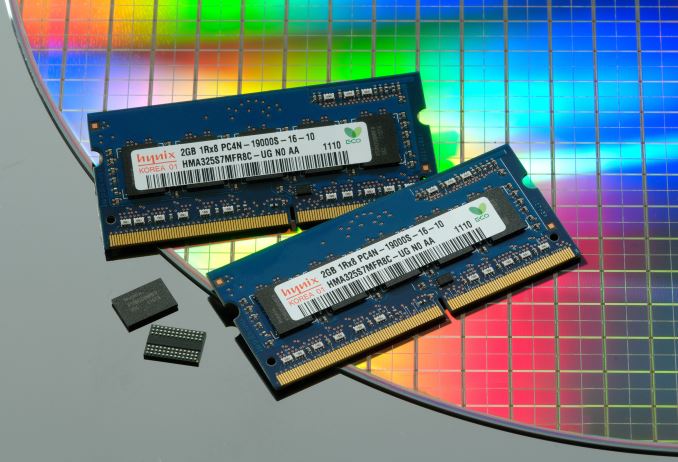
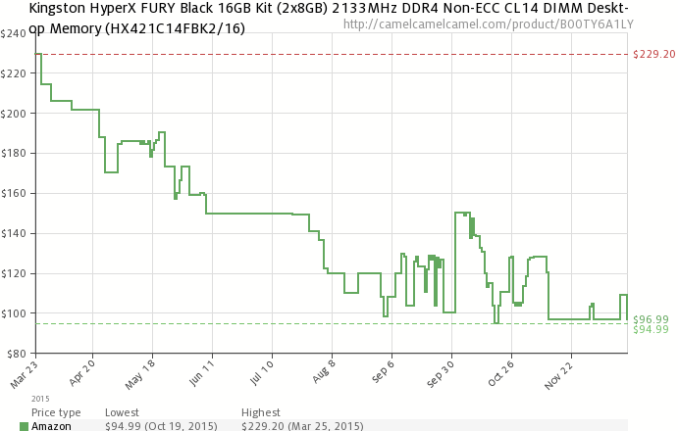
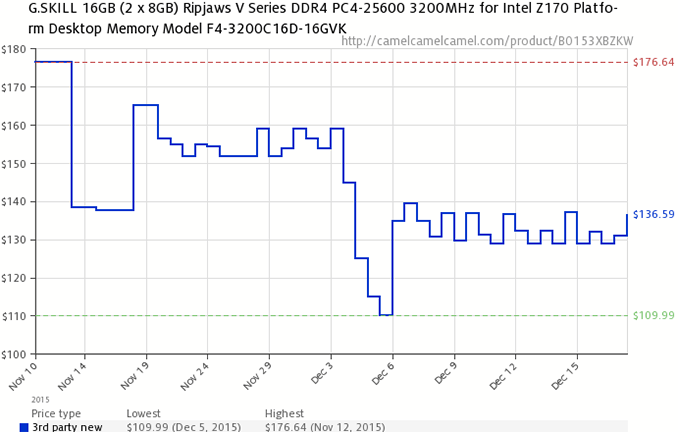

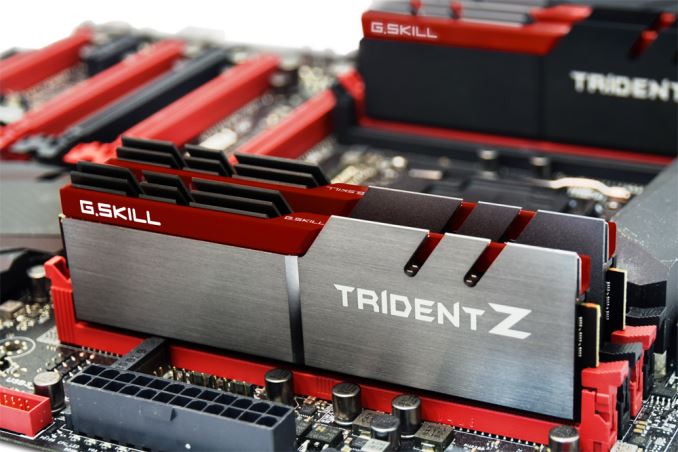

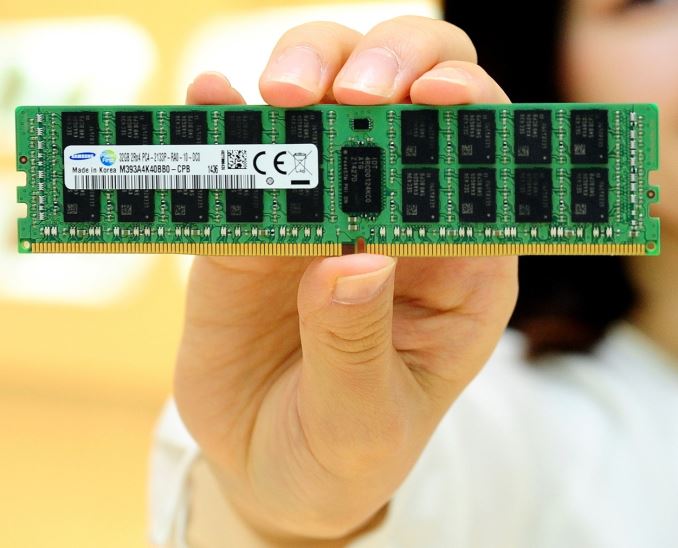


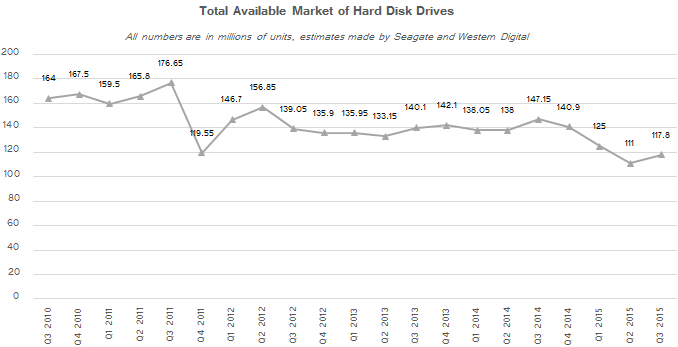
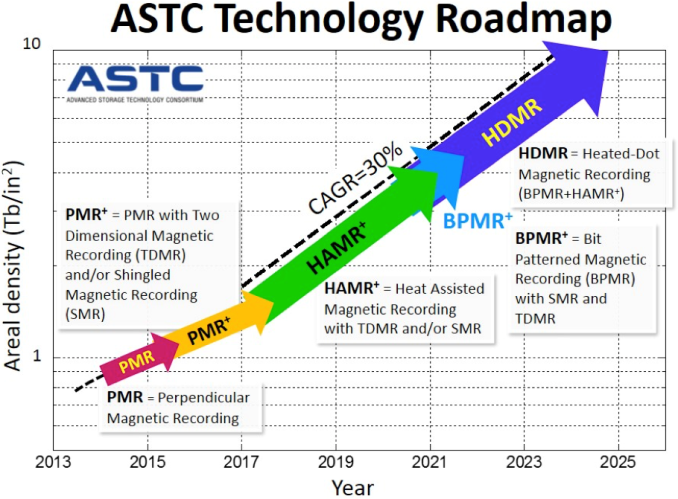
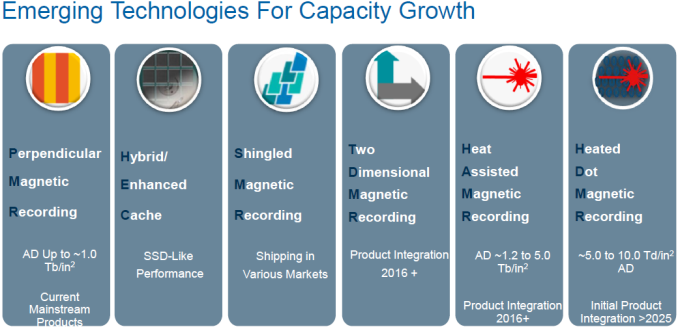
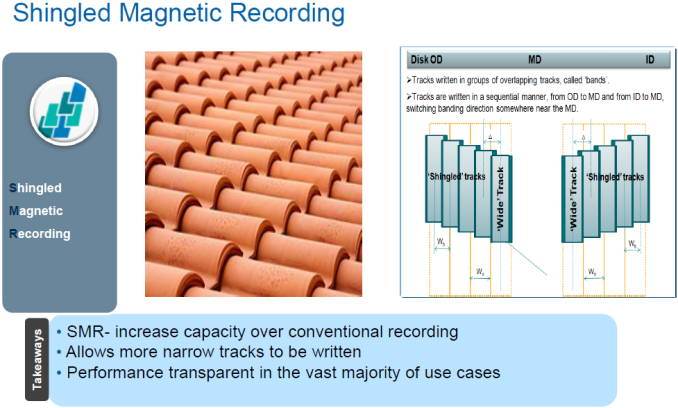
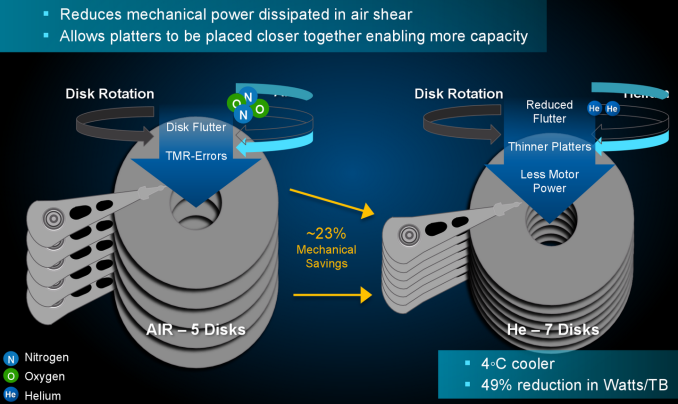
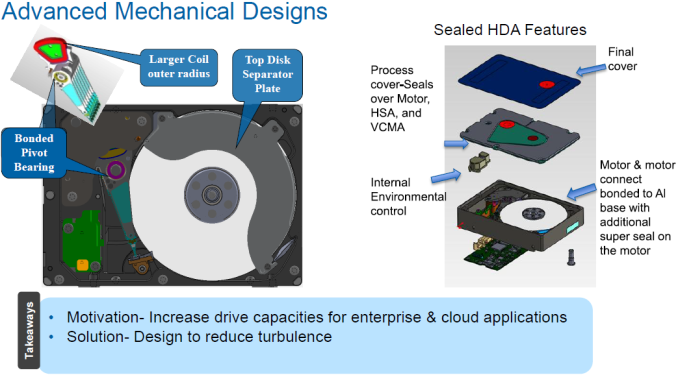
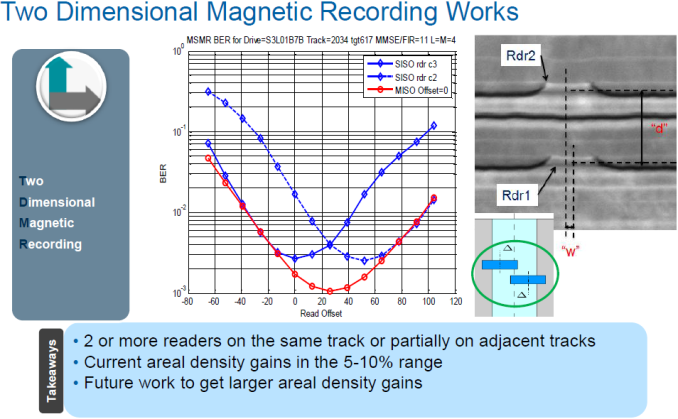
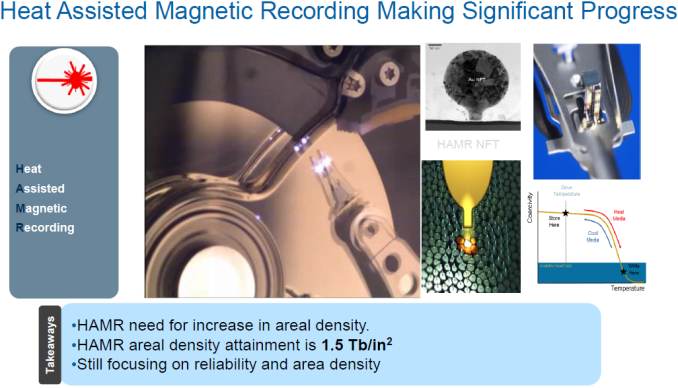
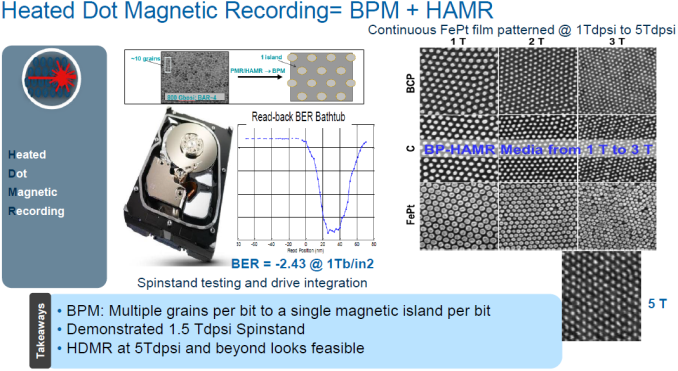
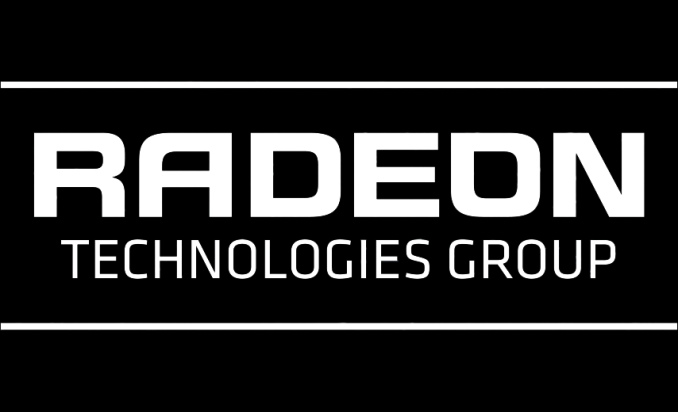


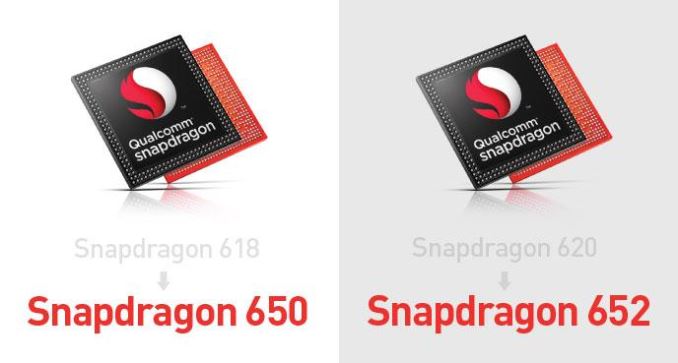

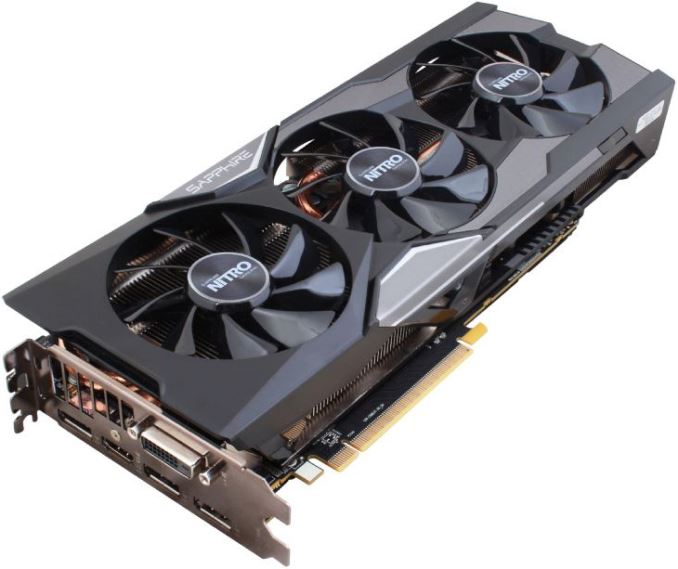
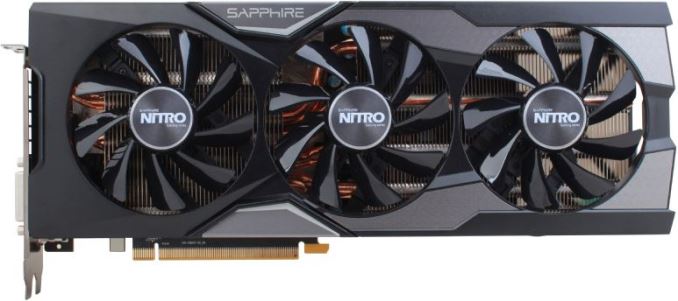
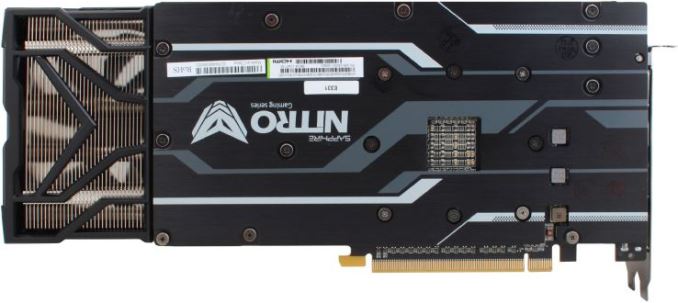







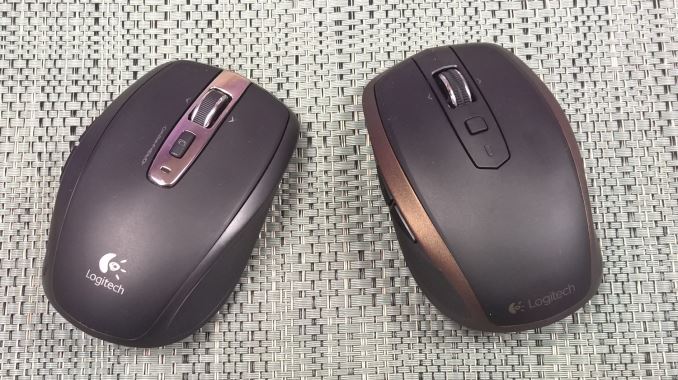
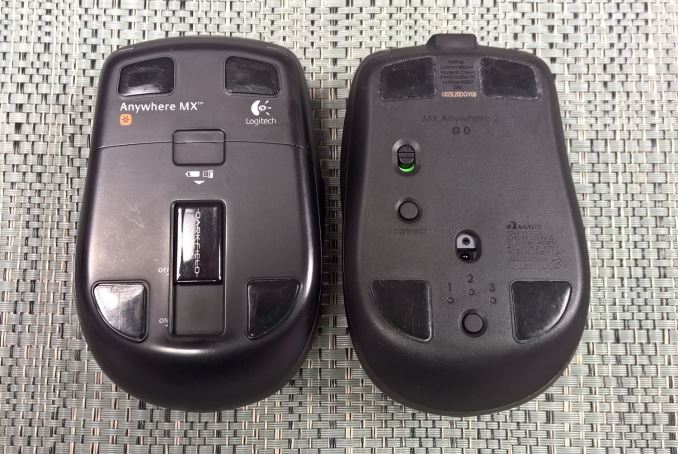
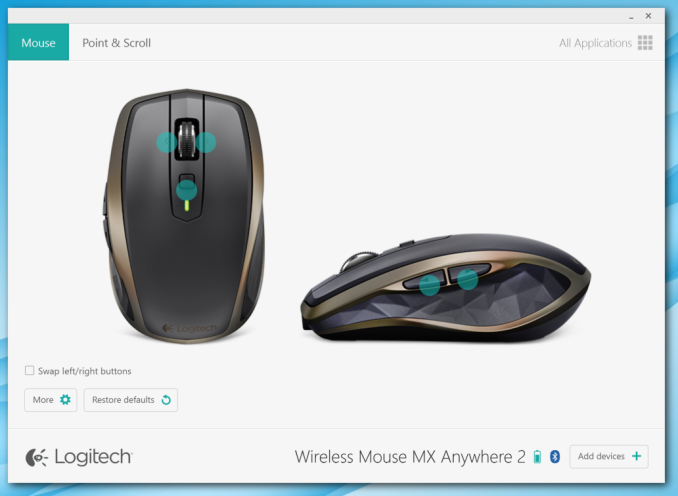


No comments:
Post a Comment